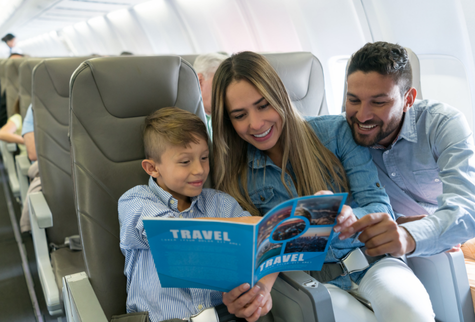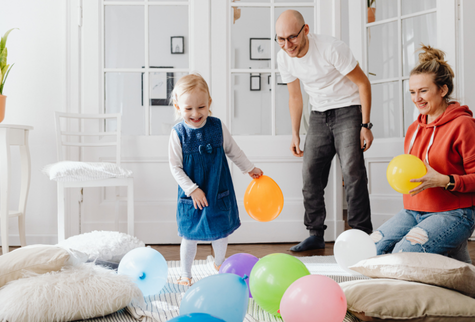Holiday Preparation Tips for Children with Autism: Maintaining Routines and Managing Travel Stress
Make your holidays smoother and more enjoyable with a little planning. Keep routines steady, prepare travel essentials, create sensory-friendly spaces, and set expectations for gatherings. With gentle communication and flexible supports, your family can enjoy a calmer, more meaningful holiday season.

The holiday season is filled with joy, family gatherings, and exciting travel plans. But for many parents of children with autism, it can also bring challenges related to changes in routine, sensory overload, and unfamiliar environments. While every child’s experience is unique, a little planning and predictability can make the holidays smoother and more enjoyable for the entire family.
In this blog, we’ll share holiday preparation tips for children with autism, focusing on maintaining routines, preparing for travel, and managing sensory triggers.
Keep Predictability at the Heart of the Holidays
Children with autism thrive on structure and routine. The sudden shifts in schedules, visitors, and activities during the holidays can be overwhelming. Maintaining predictable routines, even in small ways, helps your child feel secure and calm.
- Stick to familiar daily anchors: Try to keep key parts of your child’s schedule (like mealtime, bedtime, or playtime) consistent, even when traveling or hosting guests.
- Use visual schedules: Visual cues help your child understand what’s coming next. You can create a simple picture-based plan for the day or week to outline activities like decorating, visiting relatives, or opening gifts.
- Prepare for transitions: Talk through upcoming changes ahead of time. For instance, “Tomorrow we’re going to Grandma’s house. We’ll stay there for dinner and come home after dessert.”
Small acts of preparation help your child navigate new experiences while maintaining a sense of control and comfort.
Plan for Travel Days

Traveling, whether by car or airplane, can be one of the most stressful parts of the holiday season. Between new sights, sounds, and crowded spaces, it’s important to prepare early to reduce stress.
Before your trip, explore our detailed guide on Sensory-Friendly Air Travel Tips for Kids With Autism: How to Prep for an Airplane This Labor Day. It offers practical strategies for navigating airports and flights with ease.
Here are a few autism travel tips to help make your journey smoother:
- Create a travel checklist: Include comfort items like favorite snacks, and sensory tools (fidget toys, favorite blanket, etc.).
- Practice short trips: If flying or taking a long drive is new, start with shorter outings to help your child build comfort with the process.
- Explain each step: Walk your child through what will happen during security checks, boarding, seat belts, and takeoff. Use social stories or videos to familiarize them with the experience.
- Plan for breaks: For road trips, schedule frequent rest stops where your child can stretch, snack, or use sensory tools to reset.
Taking the time to plan and prepare can greatly reduce travel-related stress and help your child feel more confident on the journey.
Create a Sensory-Friendly Environment
The holidays often mean bright lights, loud music, and bustling gatherings, all of which can be overwhelming for children sensitive to sensory input. Preparing a sensory-friendly environment helps prevent overstimulation and meltdowns.
- Designate a quiet space: Whether at home or visiting relatives, identify a calm area where your child can retreat when things feel too intense.
- Pack sensory comfort items: Bring familiar items like soft clothing, sunglasses, or a soft blanket for extra reassurance.
- Limit exposure: Let your child join activities for short periods and take breaks as needed. It’s okay if they don’t participate in everything.
You can also find more ideas in our Sensory-Friendly Winter Activities for Children with Autism blog, filled with calming, fun ways to enjoy the season while supporting your child’s sensory needs.
Prepare for Social Gatherings
Large family events or parties can be exciting yet challenging. Preparing your child ahead of time can make social gatherings more predictable.
- Discuss who will be there: Show pictures of relatives or friends you’ll meet to help your child recognize familiar faces.
- Set expectations: Talk about greetings, sharing, and how to ask for breaks if they feel tired or overwhelmed.
- Bring a comfort plan: Keep familiar foods, toys, or headphones handy for comfort during long events.
It’s also helpful to brief relatives or hosts about your child’s preferences, such as whether they prefer quieter spaces or need extra time before engaging.
Prioritize Gentle Communication and Flexibility
Even with preparation, unexpected situations can arise. The best approach is to stay calm and flexible.
- Use gentle communication: Validate your child’s feelings (“I know this is loud; let’s take a break together”).
- Model calm responses: Children often take cues from caregivers; your reassurance helps them feel safe.
- Celebrate small wins: Praise your child for trying new activities or handling transitions smoothly.
Remember, the goal of the holidays isn’t perfection; it’s creating moments of comfort, connection, and joy that feel right for your family.
Conclusion

With thoughtful planning and a focus on predictability, sensory comfort, and gentle communication, you can help your child enjoy the holiday season with confidence. These holiday preparation tips for children with autism not only reduce stress but also make the experience meaningful and inclusive for the whole family.
By building flexible routines and preparing for travel in advance, you create a sense of familiarity that helps your child thrive, no matter where the holidays take you.
FAQs
1. How can I maintain routines during the holidays for my child with autism?
Maintain daily anchors, such as meals and bedtime, consistently, and use visual schedules to indicate upcoming events. Even partial routine stability can help your child feel secure.
2. What are some sensory-friendly travel tips for children with autism?
Pack comfort items, plan for breaks, and prepare your child for each step of the travel process. Discover our comprehensive Sensory-Friendly Air Travel Tips for expert guidance.
3. How do I prepare my child for family gatherings during the holidays?
Show them photos of relatives, set clear expectations, and give them options for quiet time or breaks when needed.
4. What are easy ways to create a sensory-friendly holiday environment?
Lower noise levels, use soft lighting, and have a designated calm space. For more ideas, visit our Sensory-Friendly Winter Activities blog.
Explore More

Holiday Preparation Tips for Children with Autism: Maintaining Routines and Managing Travel Stress
Make your holidays smoother and more enjoyable with a little planning. Keep routines steady, prepare travel essentials, create sensory-friendly spaces, and set expectations for gatherings. With gentle communication and flexible supports, your family can enjoy a calmer, more meaningful holiday season.

How to Choose Sensory-Friendly Winter Clothing for Your Child with Autism
Sensory-friendly winter clothing can make cold-weather dressing easier for children with autism. Soft fabrics, tagless designs, and gentle layering reduce discomfort and support smoother routines. With small strategies like offering choices, practicing indoors, and creating predictability, parents can ease dressing challenges. Early Autism Services provides personalized support to build comfort and confidence.

Sensory-Friendly Winter Activities for Children with Autism
Winter can be challenging for children with autism due to sensory sensitivities and routine changes. This blog offers sensory-friendly indoor and outdoor activity ideas, ABA strategies to maintain routines, and clothing and comfort tips. With thoughtful planning and EAS support, families can help children stay calm, engaged, and happy throughout the winter season.

